In the human body, the skin is one of the most important organs. It performs several functions at once: barrier, excretory, sensitive, thermoregulatory, storage and others. Therefore, parents should carefully monitor the condition of their baby’s skin from early childhood.
Normally, a child’s skin should be clean, smooth, without cracks or inflammation. If there are any changes on it (redness or roughness), parents should immediately pay attention to it. The child’s body signals that something has gone wrong.
If a child has dry skin, it means that the stratum corneum does not contain enough moisture. Its appearance changes - it becomes rough, wrinkled, sometimes even scaly, and loses elasticity. But that's not the worst thing. The danger lies in the fact that microcracks appear in dry skin, through which pathogenic bacteria easily penetrate into deeper layers and become the cause of the development of dermatological diseases.
Why does my baby have dry skin?
Dry skin in a child usually occurs in the first three years of life in the autumn-winter period or early spring. This phenomenon can be observed both on individual parts of the body (arms, legs, face) and on its entire surface. Children's skin is very sensitive to external factors, its protective function is just developing. Therefore, when dry spots or rashes appear on the body, it is important to determine which personal hygiene items may cause irritation of the epidermis, and exclude shampoos, soaps, gels, and washing powders to which the baby may be allergic. If your child has dry skin, you should choose only hypoallergenic hygiene and laundry products, preferably without a strong odor and bright color.
You should not bathe your baby in hot water, as it tends to dry the skin; the optimal temperature for this procedure is 37°C.
Sudden changes in temperature can also cause dry skin in a child. Severe frost and cold winds often cause irritation and redness on the face and hands. Therefore, before going outside, the baby needs to lubricate exposed areas of the body with a special cream.
Heating systems operating in winter dry out the air in apartments, so it is recommended to use special humidifiers during this period.
Dry skin in a child can be an allergic reaction of the body, so you should pay attention to food. Among them may be those that provoke allergies, in particular citrus fruits and chocolate.
Dry skin on a child's feet
Quite often, children have dry skin on their feet. Especially in the summer, it loses moisture to such an extent that it begins to crack and hurt. In this case, it is better to wear open shoes with maximum air access. To avoid dust and dirt getting into the cracks, you need to wear socks. Before going to bed, be sure to wash your baby’s feet with baby soap, wipe them dry and lubricate them with massaging movements with a special softening fortified cream.
Dry skin on a child's feet is highly susceptible to infections, which can lead to complications. The familiar heat rash, diaper dermatitis, and diaper rash spread quickly if not properly cared for, and a pustular rash can even form. To avoid complications, it is necessary to show the child to the doctor as soon as possible and begin treatment.
Treatment of dry skin in children
The epidermis in young children is not yet able to retain moisture in sufficient quantities, so it has to be replenished from the outside. The choice of moisturizer must be taken seriously, since the skin reacts sharply to external irritants. If the child has very dry skin, choose a product together with the pediatrician. Most often, in such cases, doctors recommend external preparations containing urea, in particular Excipial M lotion, as well as an additional course of vitamin A for a period of two months. It is better absorbed if you drop it on a small piece of black bread before eating. In some cases, if the baby’s skin is inflamed, vitamin E, calcium supplements, and fish oil are prescribed. The dose of medication is determined by the doctor.
It is better to bathe your child without foaming detergents at all. Herbal baths are very effective in such cases. You need to mix rose petals and chamomile flowers in equal proportions, pour boiling water over it and let it brew for 15-20 minutes. After this, strain and add to water. The procedure should last at least 10 minutes. A bath with flax oil is also effective (1 tablespoon will be enough).
After bathing, you can give your baby a massage, treating the skin with a cream containing vitamin A.
Dry skin of a child as a sign of the onset of the disease
Sometimes dry skin can indicate the onset of a disease. Therefore, if redness or irritation occurs, parents need to consult a doctor to make an accurate diagnosis, establish the cause and begin treatment. Dry skin in a child, mainly under the age of 1 year, often occurs with atopic dermatitis. Severely itchy, reddened areas are localized on the face, without affecting the nasolabial triangle.
Peeling and scaly formations on the elbows, knees, and cheeks may be signs of ichthyosis, a genetic disease in which the process of keratinization of cells in the body is disrupted.
If a child’s skin is very dry and peeling, most likely it is hypovitaminosis A and PP; treatment in the form of taking the necessary vitamins eliminates unpleasant symptoms.
It should be taken into account that dry skin can be caused by dehydration due to dyspeptic disorders (vomiting, diarrhea) and excessive sweating.
Dry spots on baby's skin
Dry spots on children's bodies often appear, and there is nothing unusual or scary about this, because she is very sensitive. But parents should be concerned if they do not go away for a long time. Firstly, the cause of such spots may be physiological, since in young children the fat glands are not yet fully functioning. Secondly, the condition of the skin is influenced by environmental factors (temperature and water hardness, air humidity, food, soap). At first, to soften the affected areas, you can use a product purchased at the pharmacy, for example, Panthenol. But if dry spots on the child’s skin do not disappear, you should consult a doctor, as they can be symptoms of serious diseases such as atopic dermatitis, eczema, and psoriasis.
Skin ailments are usually difficult to deal with, but a correct diagnosis made in time makes the task easier. If there are signs of a particular skin disease at an early age, it is very important to immediately take action and prevent its progression. Without proper treatment in a medical facility, it can become chronic.
Video from YouTube on the topic of the article:
Children's skin is like a litmus test: it instantly signals problems in the body and improper care. That is why it is so important to pay attention to any changes in her condition. Let's talk about how to develop an algorithm for caring for dry skin of babies.
- Main characteristics of healthy baby skin
- Causes of dry skin in children
- What does dry skin mean in a child?
- Dry skin on a child's feet
- How to eliminate dry skin
- Precautions for dry skin
- Rules for care at different times of the year
- Prevention measures
- Tools Overview
Main characteristics of healthy baby skin
Soft, delicate, velvety - this is how we usually talk about a baby’s skin. But even if the child is healthy, it does not become so immediately after birth.
Why? Explains Alexander Prokofiev, dermatovenerologist, medical expert at La Roche-Posay: “After the baby is born, his skin needs to adapt to the environment. In newborns, this process has not yet been completed, so their skin is more dry, more susceptible to irritation, redness, and easier to injure. These features disappear with age.”
Typically, by the age of two, the upper stratum corneum of the epidermis thickens, and the skin becomes more protected from external influences. The sebaceous and sweat glands begin to work more actively, and the process of thermoregulation gradually normalizes.”
Normally, a child’s skin should be pale pink and have good turgor, that is, be soft and elastic to the touch.
Bathing water should not be too hot © iStock
Causes of dry skin in children
“Children’s skin can become dry under the influence of both external and internal factors,” says Alexander Prokofiev. Let's list the external reasons.
Using detergents more than once a week, the water is too hard for bathing (it is better to pass it through a filter).
Exposure to the sun without protection
The baby’s skin is not able to resist the effects of UV rays, so children under one year old can be kept in the open sun for no more than five minutes a day, and even then “under the cover” of special baby creams with high SPF.
Dry indoor air and overheating
Overheated air is a test for a child’s imperfect thermoregulation system: the skin turns red, becomes hot, and irritation appears. The same thing happens if you wrap your baby up too much.
Cold air coming into contact with delicate baby skin can cause redness, dryness and irritation.
Internal factors may be due to:
poor nutrition, which is expressed in a lack of vitamins;
some diseases, primarily skin and endocrine;
What does dry skin mean in a child?
Very dry baby skin is a cause for concern. It is more vulnerable, easily injured, and damaged skin is more susceptible to infections, especially in infancy.
In addition, dryness may indicate the presence of:
ichthyosis (a disorder of keratinization of the skin, which manifests itself in the form of scale formation);
other diseases, including diabetes.
If dryness is a persistent feature of your child's skin, it makes sense to first consult with your pediatrician and then see a dermatologist for appropriate treatment.
Dry patches of skin on the child's face and body
Friction from shoes and clothing can also cause redness and flaking of baby's delicate skin. Sometimes the cause of hypersensitivity is the diseases mentioned above. In any case, choose clothes and shoes for your baby made from natural materials, and use children's hypoallergenic powders for washing. To prevent dry feet in summer, it is better to wear open-toed shoes.
How to eliminate dry skin
Use moisturizing creams, lotions or body milks made specifically for children's skin. On such products it is always written what age they are intended for.
The water for bathing the baby should not be hot. The optimal temperature for the bath is 36–37 degrees.
Bathe your child every day, but use detergents no more than once a week. Choose special delicate formulas for this.
Moisturize dry areas with baby cream, milk or lotion.
An important condition against dry skin in children is the drinking regime © iStock
Precautions for dry skin
Dry skin brings a lot of anxiety to a child. It itches, itches, flakes - all this causes moodiness and bad mood. What can parents do in this situation? First of all, eliminate any factors that provoke dry skin of the baby.
It is not advisable to use soap when bathing and washing your face; it dries out the skin.
Sponges made from rough materials are also harmful. Washing should be as gentle as possible.
Do not wrap your baby while walking to avoid sweating.
Do not self-medicate. If dry skin persists, consult a doctor.
Rules for care at different times of the year
A child's skin needs protection in both heat and cold.
Remember that you should not be in the sun during the hottest time, from 11 a.m. to 4 p.m. On the beach, be sure to wear a T-shirt and a Panama hat on your baby, and use children's sunscreen. When you return from a walk, wash off the SPF cream and apply a moisturizer to your skin.
Exposure to cold and dry indoor air contributes to excessive dryness of the skin. Install a humidifier in your home or regularly cover the radiators with a wet towel. Moisturize your baby's skin after bathing.
Prevention measures
To avoid dry skin, offer your child something to drink often. Make sure there are enough vitamins in his diet. Moisturize your baby's skin after bathing. In your care, use only hypoallergenic products tested by dermatologists.
The creams should include moisturizing and soothing components: panthenol, niacinamide, oils (shea, olive, wheat germ), zinc oxide, vitamins A, B, E, F, plant extracts (chamomile, calendula, string).
Tools Overview
Milk for very dry skin Lipikar Lait, La Roche-Posay
Formula with shea butter, thermal water and niacinamide nourishes the skin and restores its lipid barrier. Suitable for use in infants, children and adults.
Skin cleansing gel Lipikar Gel Lavant, La Roche-Posay
Contains shea butter and niacinamide and is free of fragrance and parabens. Has skin-soothing properties, suitable for the whole family.

Every mother really wants her baby to look like in the commercial - plump, smiling, with soft velvety skin that you just want to rub your cheek against. However, in practice, babies do not always look so appetizing, and such a problem as dry skin in a child gives his parents a lot of reasons for worry. Authoritative children's doctor Evgeniy Komarovsky tells what reasons can cause dry skin in a baby, and what parents should do.
Features of children's skin
A baby's skin is significantly different from the skin of its parents. She is more vulnerable, gentle. Sweat glands are not sufficiently developed in the first year of life, and therefore the baby has to give off excess heat through pulmonary breathing. If at the same time the baby has to breathe too dry air, or he lives in a room where, thanks to the efforts of his mother and grandmother, it is hot all the time, then the load on the immature sweat glands increases and the skin deteriorates.
The stratum corneum (the uppermost layer) of children's skin is well supplied with blood, so any scratches on a baby heal faster than on an adult. However, the stratum corneum, which is thin and loosely connected to other skin layers, creates favorable conditions for irritation and injury.
Initially, dry skin in babies practically never occurs due to the saturation of lipids - an innate feature of all toddlers. But these fats perfectly dissolve most of the chemicals found in washing powder, soap, and urine, and therefore inflammation of the skin in children is common. Dry skin can also become due to health problems.
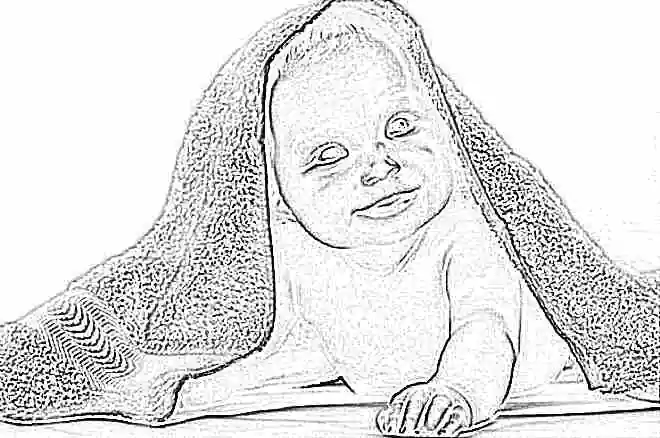
Causes of dryness
The most common cause of dryness, in which the skin becomes somewhat rough to the touch, is contact dermatitis, says Evgeny Komarovsky. In this case, the skin is damaged due to contact with chemicals contained in washing powder or in household chemicals that the mother uses for cleaning. Contact dermatitis often occurs in response to chlorinated tap water used to bathe and wash a child.
If the skin on the lips of a child dries out, causing the lips to crack, there may be several reasons:
- dry air in the room;
- vitamin A deficiency;
- side effects of certain medications;
- allergic reaction;
- herpes virus.
If a child has dry skin on the cheeks or nose, as a result of which it often peels off, we can talk about a lack of vitamins E, A, as well as allergies.
In 90% of cases, dry skin of a toddler is caused by parents violating the rules of a favorable microclimate - the house is hot and dry.

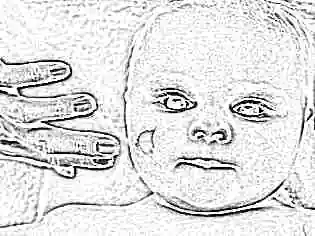
Treatment
Contact dermatitis, in which the lesions are minor and appear as small dry patches, is eliminated by the use of topical moisturizers, such as baby creams containing aloe. The most effective local medicine, according to Evgeniy Komarovsky, is Bepanten ointment or cream. For more extensive lesions, the microclimate in the room where the child is located should be changed.
Bathing water must be boiled or filtered, bedding and baby clothes must be washed exclusively with a special baby powder, which is marked “Hypoallergenic” on the packaging. After washing, things should be additionally rinsed not with ordinary tap water, but with pre-boiled water, since during the boiling process the liquid gets rid of chlorine.
In the next video, Dr. Komarovsky talks about skin problems with allergic dermatitis.
If the skin is dry due to an allergic reaction, the doctor may prescribe antihistamines; it will be necessary to find the true cause of the body’s inadequate reaction. This is the task of an allergist, and parents need to make sure that the child does not have contact with the most common allergens - animal hair, dust, pollen, chemicals and chlorine. It is important to ensure that the baby does not sweat, so you should not overwrap him or overheat the room.
Chapped lips and rough skin on the cheeks and nose are treated according to the reason why they are cracked or dry. Oil solutions of vitamins A and E are almost always prescribed. Sea buckthorn oil is recommended for topical use; for lips, you can use hygienic moisturizing lipstick with aloe. The child should drink more fluids. For cracking of the skin of the feet, heels and toes, local antifungal therapy and the same sea buckthorn oil can be prescribed.
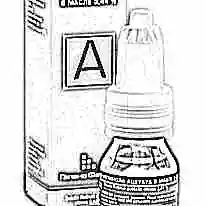
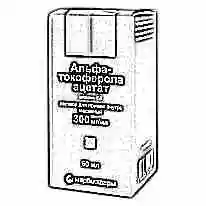
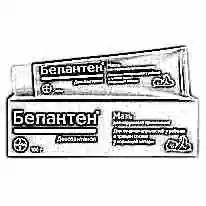
Advice from Dr. Komarovsky
Many problems with dry skin can be solved simply by creating normal conditions for the child. It doesn’t really matter how old the offspring is - 1 year or 15, he should breathe cool and sufficiently humidified air. If you maintain the temperature in the apartment at 18-20 degrees, and the relative air humidity at 50-70%, then ointments and creams may not be needed at all, because with such environmental parameters the skin rarely dries out.
For children who have already had this happen, dermatologists advise (and Komarovsky completely agrees with them!) not to use hot baths for bathing, it is better to limit yourself to warm water, and less often to use detergents - gels, foams and shampoos. It is enough to use baby soap once a week. Bathing time for such babies should not exceed 10-15 minutes, and the door to the bathtub should be closed tightly so as not to reduce air humidity. After bathing a child with dry skin, you should not dry it with a towel, but gently pat it dry.
When choosing a moisturizer, parents should give preference to options with added oils. You should not use gels and shampoos with a strong odor, rich perfume additives and dyes. From a huge range of soaps, it is better to choose liquid baby soap.
Parents of a child with dry skin should make sure that the toddler, crawling or playing, does not rub against carpets, so that clothes do not rub his “problem” areas. Particular attention should be paid to the choice of a disposable diaper; it is best to give preference to manufacturers who add a layer impregnated with aloe balm to the diaper.
A child with a tendency to dry skin should not stay in the open sun for long periods of time. If there is a vacation by the sea, the mother must make sure that the child is smeared with moisturizers with UV protection, and in the evening, after a shower, with baby cream.



